If you buy through our links, we may earn an affiliate commission. This supports our mission to get more people active and outside.Learn about Outside Online's affiliate link policy
Face-Off: Asics vs. Saucony Carbon-Plated Showdown

In the last two years, Nike set the pace for carbon-plated supershoes with its Vaporfly 4% and Next% models. HOKA, Brooks, Skechers, and New Balance soon followed with their own carbon versions. And now Saucony and Asics have joined the fray—but not with carbon copies (no pun intended). Rather, both companies have done it their own way with “families” of shoes, three each. We pit these two sets of shoes against one another. But as they’re very different lines, this comparison serves primarily to highlight their contrasting qualities so you can select what’s best for your running and racing.
Asics Carbon-Plated Shoes
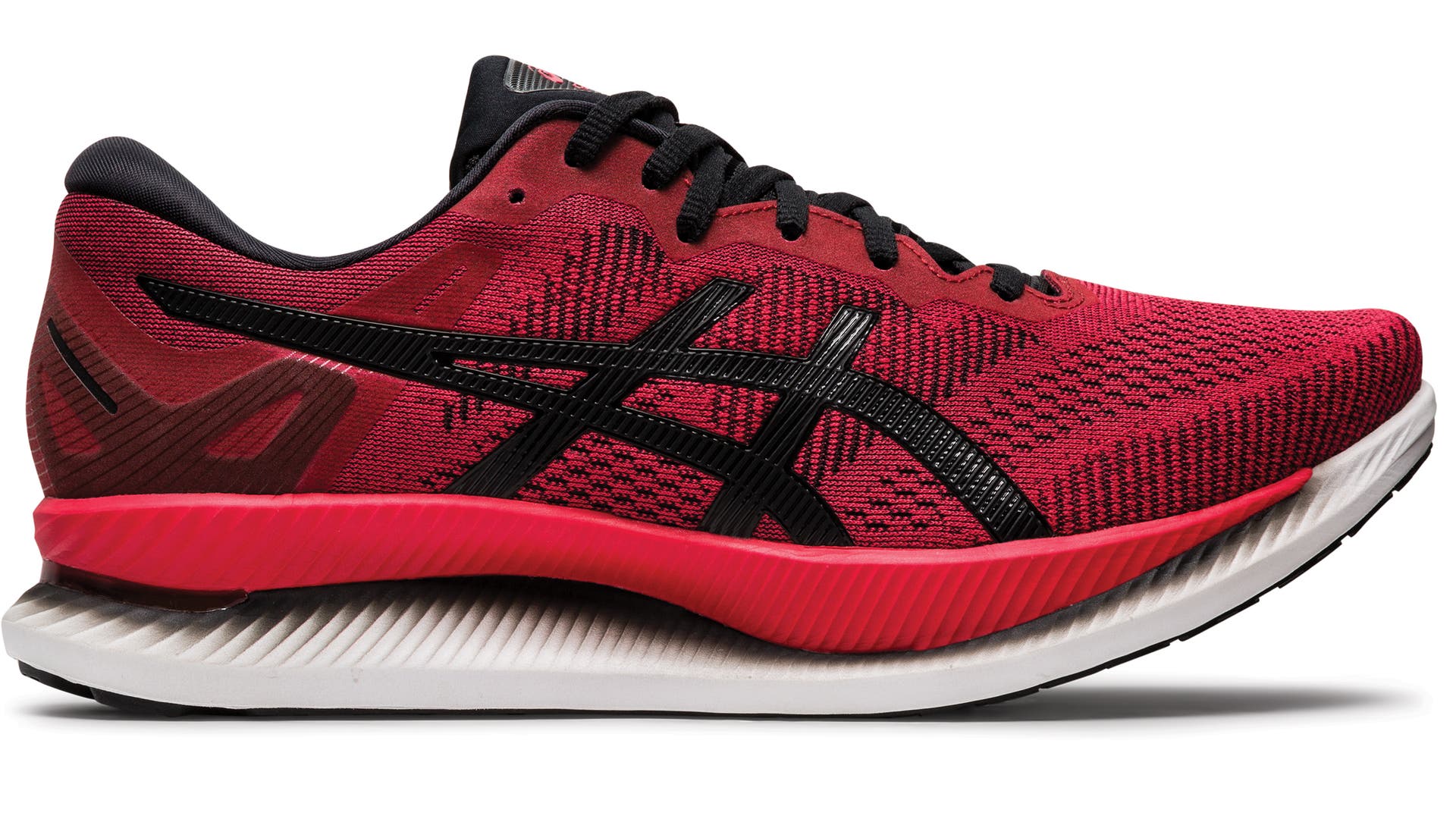
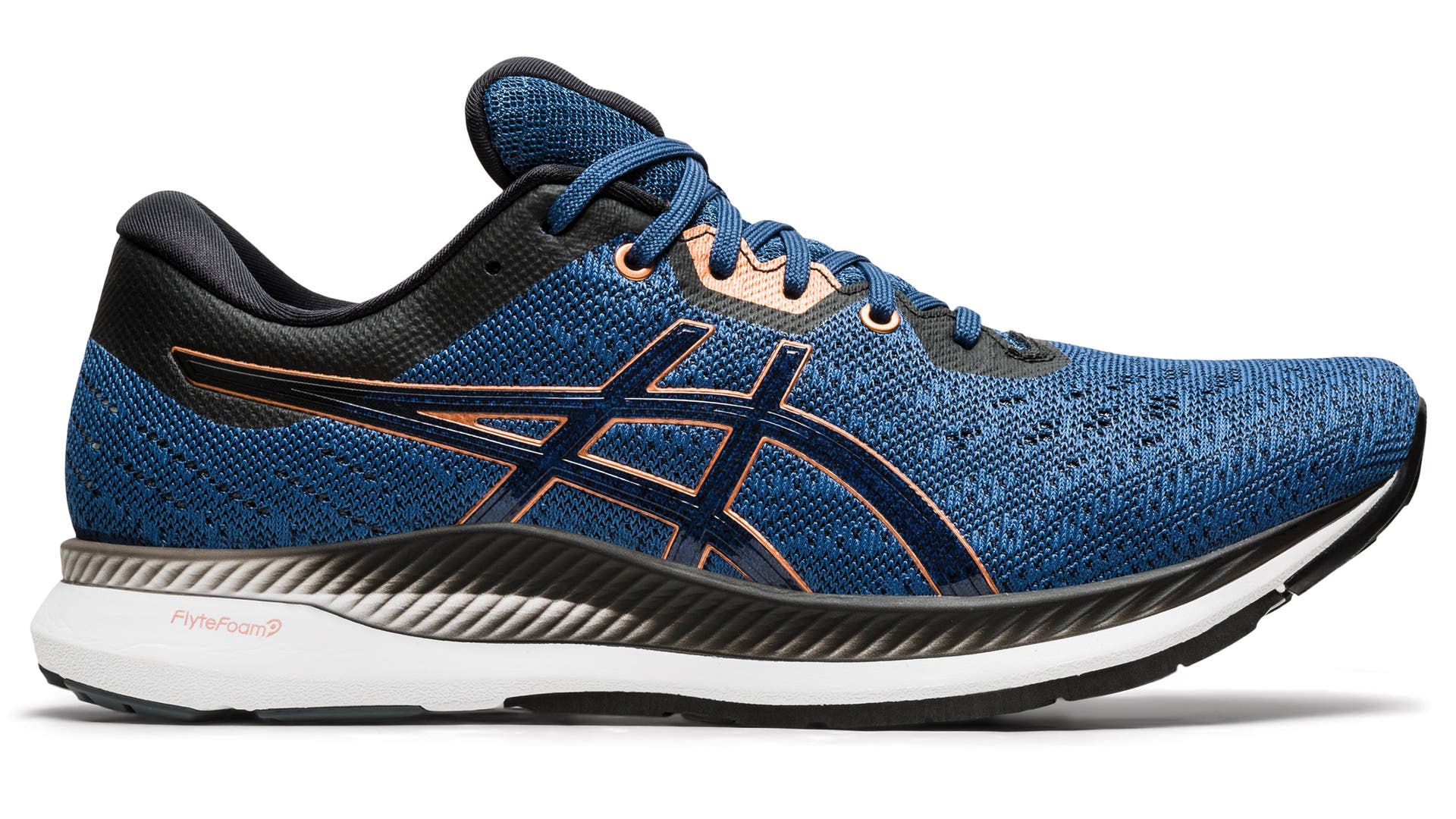
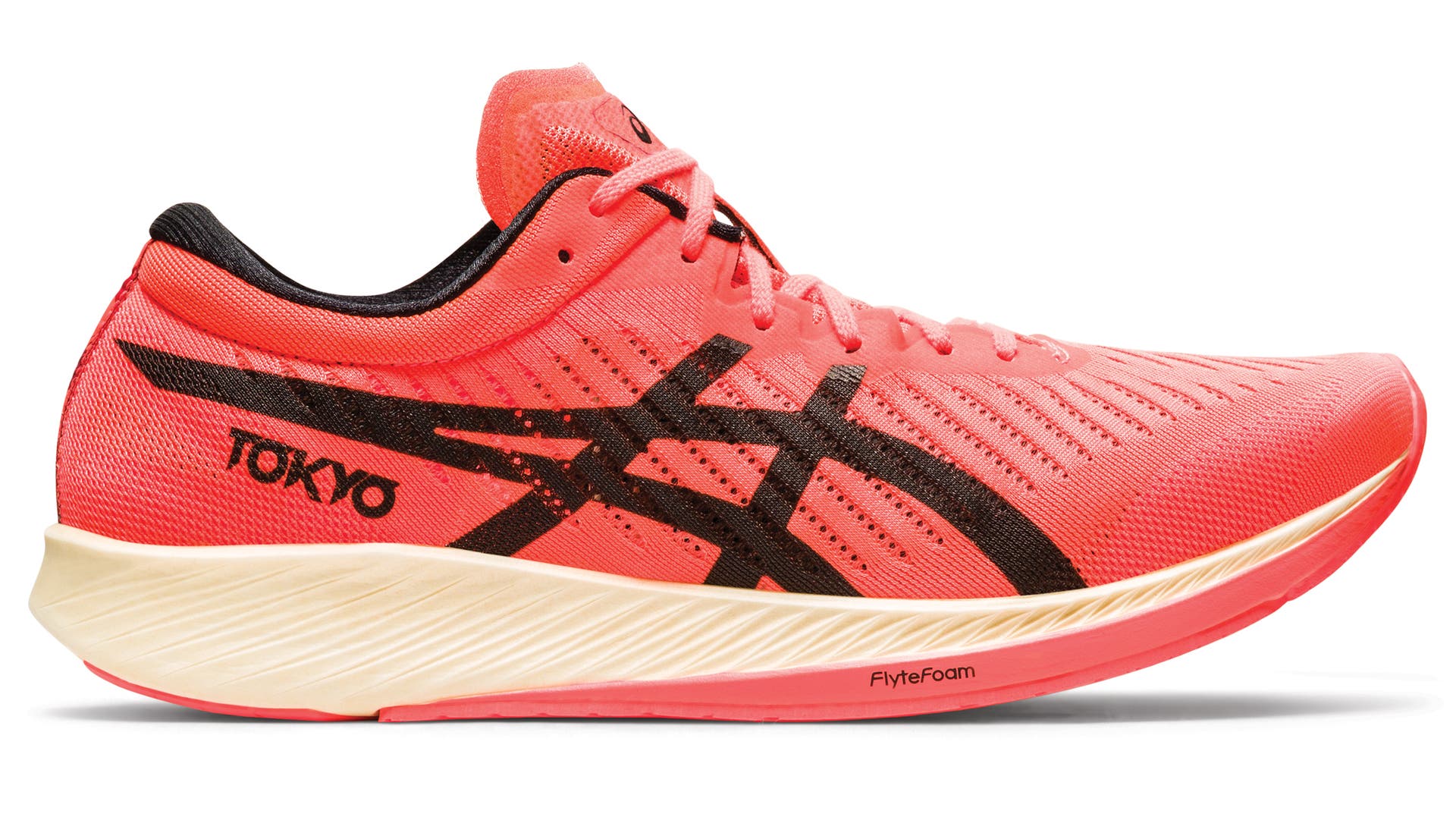
What
MetaRacer is a bottom-loaded carbon-plated, low-profile, lightweight shoe with top-end racing flat qualities (akin to Adidas’ Adios). The upper is almost see-through with exceptional breathability and features callbacks to Asics’ heritage Onitsuka Tiger Magic Runner, as evidenced by the hole port at the front tip for added water-shedding (great for hot races and water dumps). The GlideRide is an everyday trainer with the highest stack height of the Ride family, using a pressed EVA plate sandwiched between two foam layers for performance and cushioning, making it a soft version of the carbon supershoes. EvoRide uses the stripped-down model of Asics’ GuideSole technology, but it is nonetheless a floaty training shoe that is lighter and more flexible than the GlideRide.
Pros
The MetaRacer will be a great race shoe for distances up to and including 70.3. The carbon plate is there but not as prominently as in most other supershoes because Asics placed it further from the foot—just above the full-outsole sponge rubber, which still corners well and provides traction on wet pavement. The laces also hold really well. And, unlike most carbon-plated racers, the MetaRacer works well at almost any pace so it doesn’t only cater to the elite sub-seven-minute-mile crowd. GlideRide and EvoRide both make excellent trainers and the Flytefoam midsoles hold up to long training runs with notable resilience and cushioning. The GuideSole technology of all three shoes helps to get you up on your toes and saves your calves.
Cons
With its low stack height and relative minimal cushioning, compared to other supershoes, the MetaRacer would be hard on the legs for a marathon after T2. While the GlideRide’s pressed EVA plate provides supershoe performance qualities, it is unfortunately too heavy for most athletes on race day. EvoRide would do the trick, but it lacks the performance enhancing qualities of a plate.
This is for…
MetaRacer is best for racing sub-Ironman distances.
Saucony Carbon-Plated Shoes
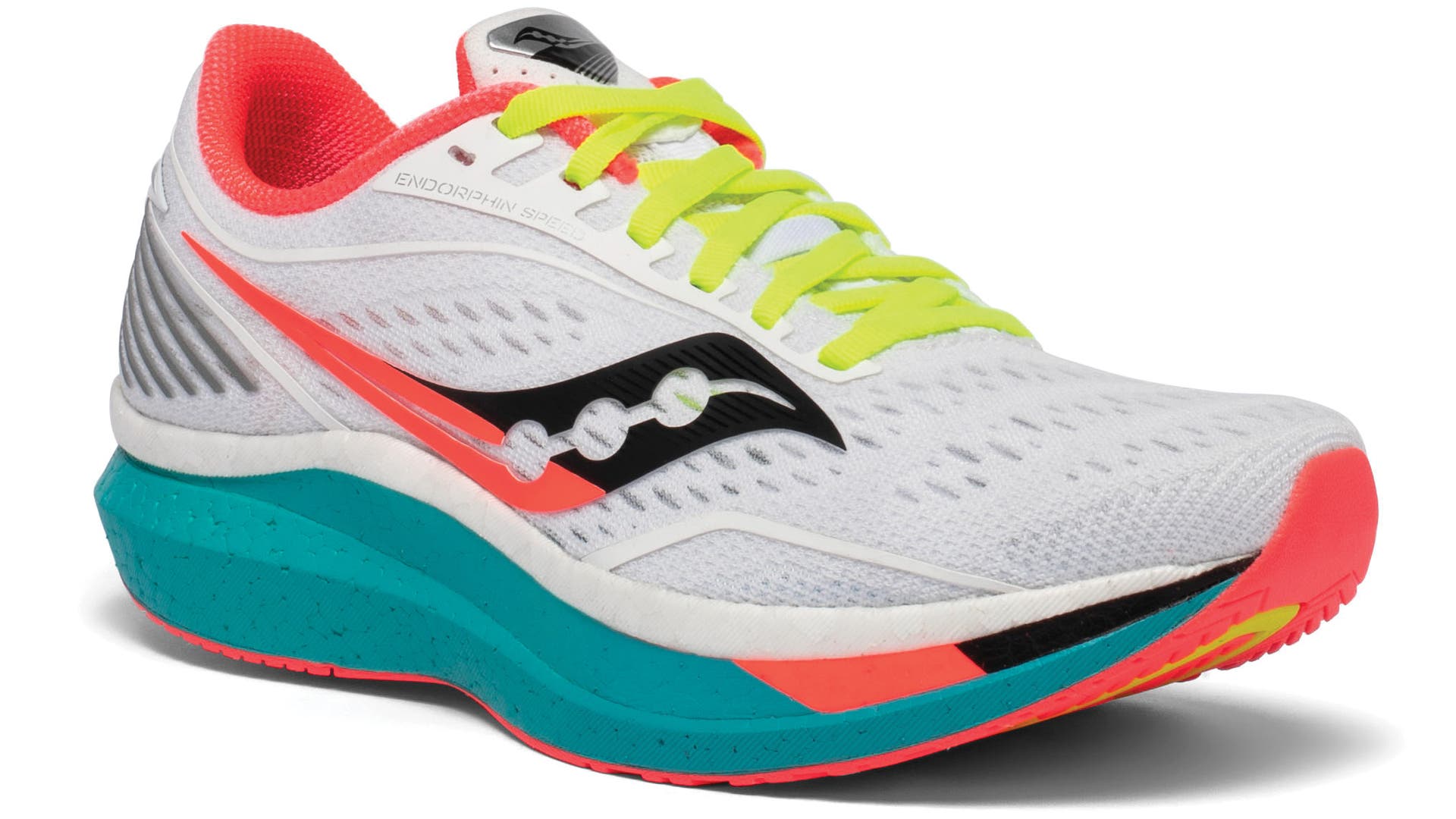
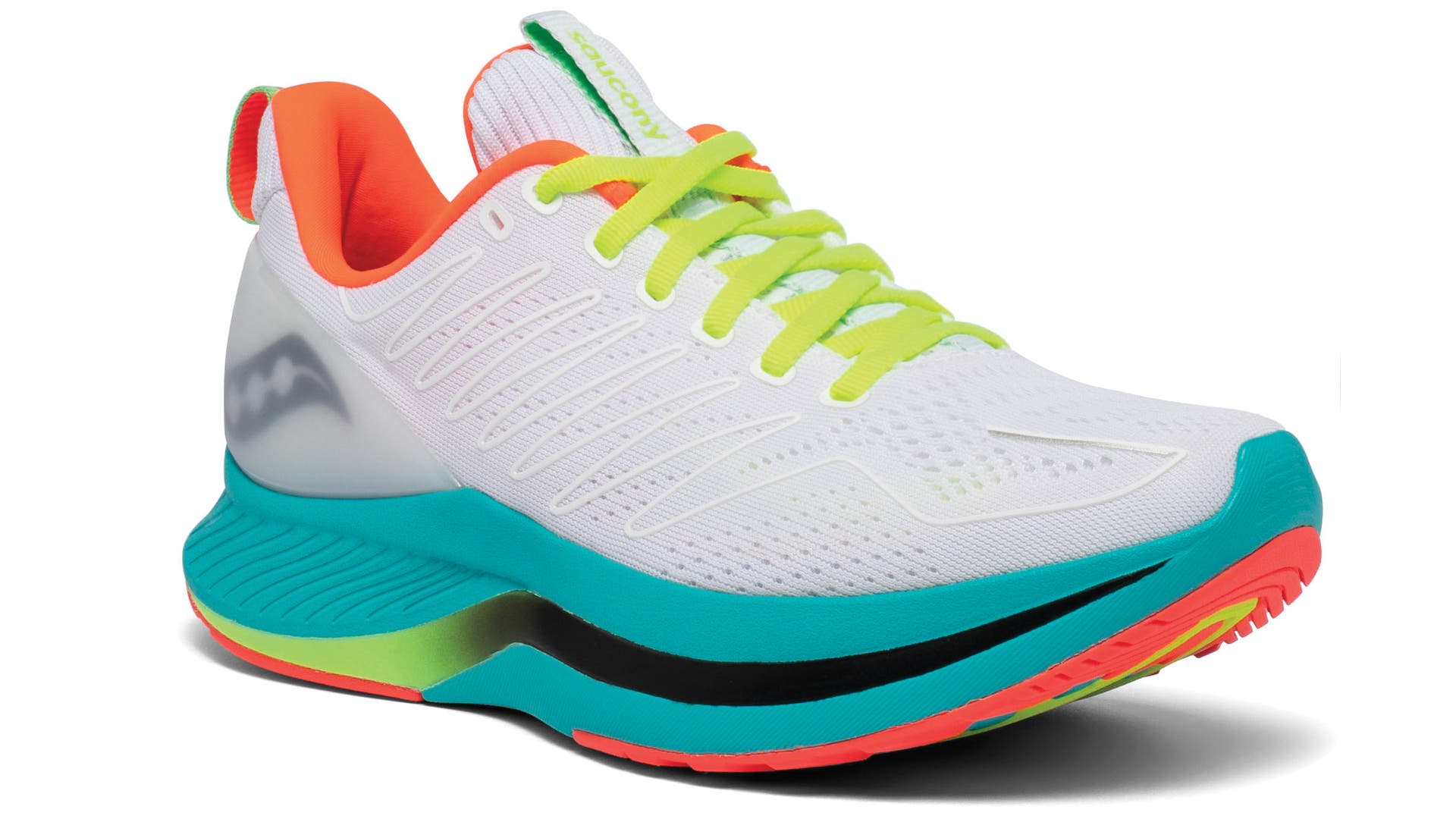
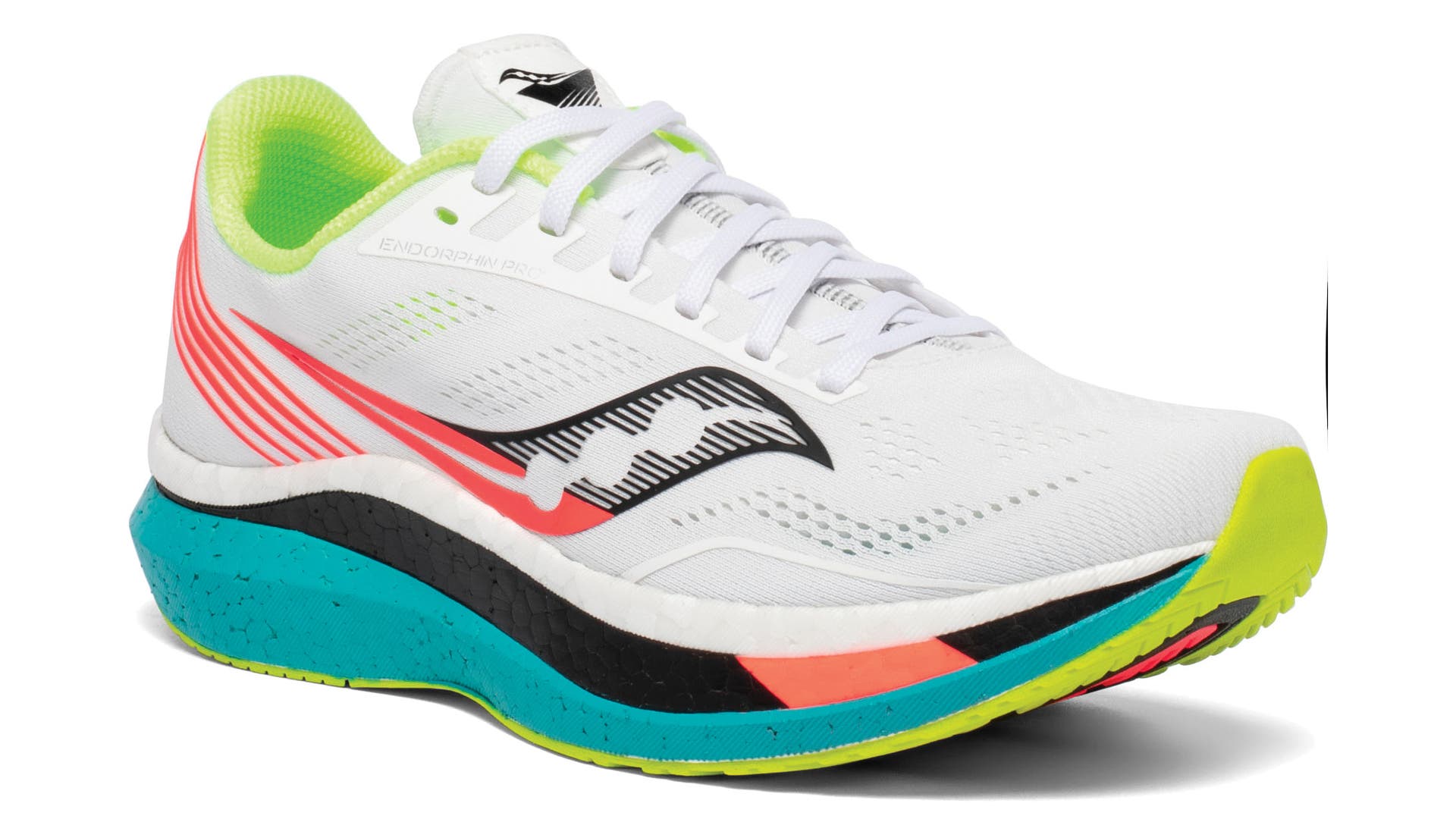
What
The Endorphin Pro is a carbon-plated supershoe that ranks well against its competitors, using an S-curve plate and
a lightweight, responsive midsole for a refined combination of cushioning and efficiency gains. Although the Endorphin Speed lacks carbon, it uses a more flexible nylon plate for a more forgiving ride. The Endorphin Shift is a trainer that protects the foot from the ground, using a giant bed of midsole cushioning and Saucony’s Speedroll technology to encourage a more fluid gait cycle.
Pros
Depending on stiffness preference, the Pro and Speed are almost a toss-up for long-course racing—with the Speed’s great flex (and lower price) giving it an edge. Both shoes offer an efficient ride that gets you right up on your toes, even with tired legs. The PEBA-based midsole superfoam (used in all three shoes) is also incredibly light and resilient. The Shift is a maximum-cushioning shoe that uses a big midsole platform and integrates a plastic heel counter for added rear-foot stability.
Cons
You’ll want a shoe horn at T2 because getting your heel into the Pro and Speed is a feisty challenge, and the laces don’t stay tied so you may want to replace those with more dependable ones. Depending on your running form, you may also experience some compression of the midsole on longer runs. The Shift is unstable while cornering because of its 38mm stack height that isn’t built on a widened platform—like many Hoka shoes, for instance.
This is for…
Pro and Speed make excellent race day choices for any distance.
Winner
The Asics MetaRacer sticks out as unique in today’s world of supershoes because it provides a racing-flat feel with carbon-plated efficiency. In contrast, the Endorphin Speed is the winner for longer races, where its mix of cushion, efficiency, and flexibility are particularly appealing to bike-weary legs.